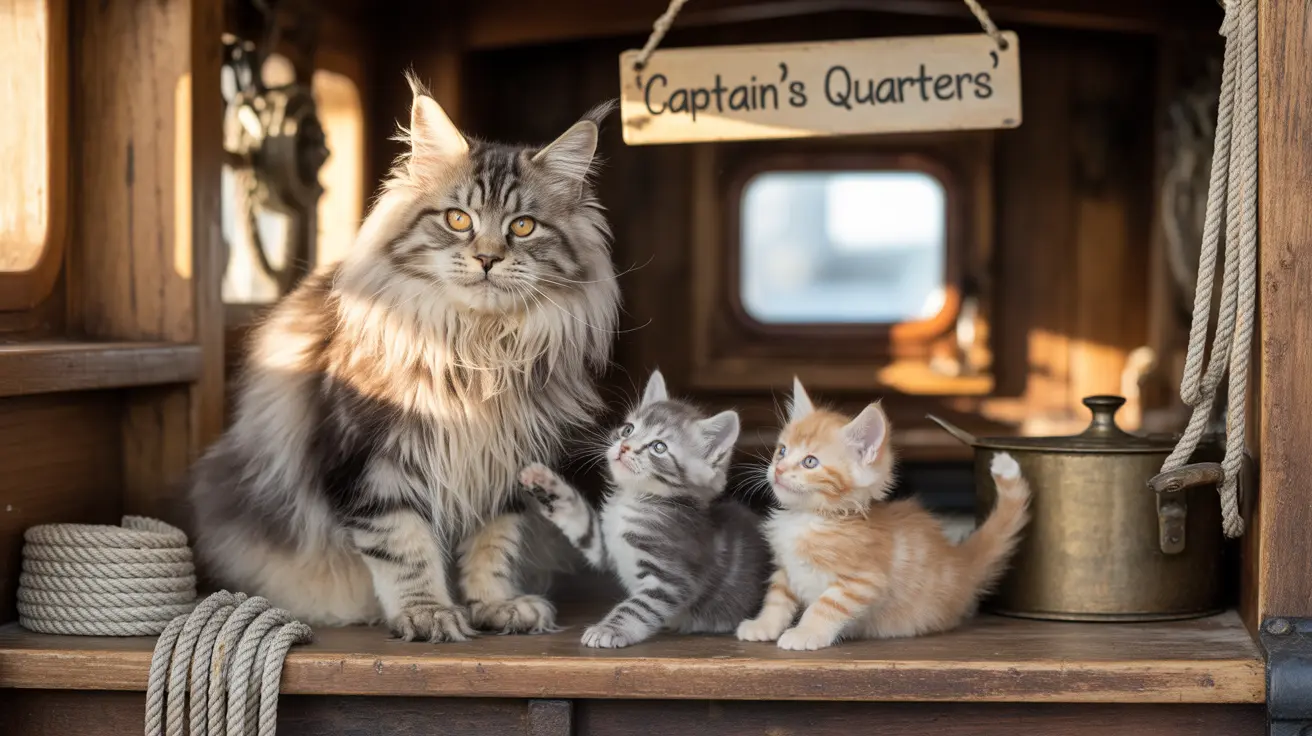The tale of cats aboard the RMS Titanic is a compelling mix of historical fact and maritime legend. While many aspects of the ill-fated ship's history are well-documented, the story of its feline passengers has captivated historians and cat lovers alike for over a century.
The most reliable historical records confirm that at least one cat, known as Jenny, along with her recently born litter of kittens, were aboard the Titanic during its maiden voyage. Their presence reflects both the practical necessity of having cats on ships and the rich maritime traditions of the early 20th century.
Jenny: The Titanic's Official Ship's Cat
Jenny was the Titanic's designated ship's cat, transferred from the vessel's sister ship, the RMS Olympic. As the official "rat catcher," she played a crucial role in controlling the rodent population that could threaten food supplies and ship equipment. Jenny gave birth to a litter of kittens approximately one week before the Titanic's departure from Southampton.
The ship's galley became Jenny's primary domain, where she and her kittens received regular attention from the crew. A kitchen scullion named Jim developed a particular fondness for Jenny, becoming her unofficial caretaker and ensuring she and her kittens were well-fed with kitchen scraps.
Maritime Traditions and the Role of Ship's Cats
Ships' cats were more than just pest controllers in the early 1900s. They held a special place in maritime culture, believed to bring good fortune to their vessels. This tradition continued until 1975 when the Royal Navy officially banned animals on ships for health and safety reasons.
Jenny's presence aboard the Titanic represented this long-standing nautical tradition, combining practical necessity with superstitious beliefs about cats' ability to protect ships from misfortune.
The Legend of Jenny's Departure
One of the most intriguing stories surrounding Jenny involves her alleged actions before the Titanic's departure. According to legend, Jenny carried her kittens off the ship while docked in Southampton, an act that her caretaker Jim interpreted as a bad omen. The story claims this prompted Jim to leave the ship's service, potentially saving his life. However, historians generally regard this tale as folklore rather than documented fact.
The Tragic Fate of the Titanic's Animals
When the Titanic struck an iceberg on April 15, 1912, the fate of Jenny and her kittens became part of the larger tragedy. No survivor accounts mention the rescue of any cats, leading historians to conclude that Jenny and her kittens perished along with most of the ship's animal population, including nine of the twelve documented dogs aboard.
Frequently Asked Questions
How many cats were officially on board the Titanic during its maiden voyage?
Historical records confirm one official ship's cat, Jenny, along with her litter of kittens. The exact number of kittens is not documented in surviving records.
Who was Jenny, the Titanic's ship cat, and what role did she play on the ship?
Jenny served as the Titanic's official rat catcher, transferred from the RMS Olympic. She lived primarily in the ship's galley and was responsible for controlling the rodent population.
Did Jenny the cat and her kittens survive the sinking of the Titanic?
There are no survivor accounts mentioning Jenny or her kittens after the sinking, leading historians to conclude they perished with the ship on April 15, 1912.
Are there any rumors or legends about other cats aboard the Titanic besides Jenny?
While rumors persist about passengers smuggling additional cats aboard, no concrete evidence exists to support these claims. Jenny is the only officially documented cat on the Titanic.
Why were cats commonly kept on ships like the Titanic in the early 1900s?
Cats were essential crew members on ships, primarily serving as rat catchers to protect food supplies and equipment from rodent damage. They were also considered good luck charms by many sailors.
The story of Jenny and her kittens remains a poignant reminder of the many lives, both human and animal, affected by the Titanic's tragic sinking. While much of their tale is shrouded in mystery, their presence aboard the ship represents an important aspect of maritime history and the special role cats have played in seafaring traditions.






